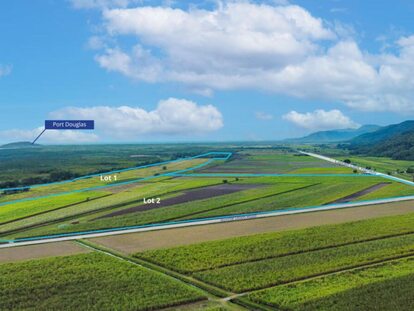The people powering Douglas Shire’s disaster response
BEHIND THE SCENES


BUSINESS FEATURE
Whether it’s severe weather, flooding, bushfires, a health crisis, or clear skies, a coordinated local network works quietly behind the scenes.
Few people think about it until disaster hits, but in the Douglas Shire, there’s a team planning, preparing, and making sure help is ready when it matters most: the Disaster Management Unit.
As we all know, Jasper was more than just a large-scale disaster.
It dragged on, bringing simultaneous flooding, water shortages, and other compounding challenges.
Recognising recovery would take years and that a trained, well-equipped incident management team was essential, Douglas Shire Council formed the DMU to manage long-term recovery while still preparing for future events.
Today, the DMU works year-round across all four phases of disaster management - prevention, preparedness, response, and recovery - and, when an emergency occurs, partners with the mayor-chaired Local Disaster Management Group.
A key focus of the DMU is starting recovery alongside the response to get help to residents sooner, while also improving community preparedness so people can make informed decisions before, during, and after an event.
Meet the team
Behind this effort is a dedicated group working year-round to keep the Shire prepared and supported.
At the helm is Paul Hoye, DMU Manager and Local Disaster Coordinator. With more than 30 years of service, Paul’s local knowledge and calm leadership are vital. In an emergency, Paul works alongside the Mayor, who chairs the Local Disaster Management Group, to coordinate critical decisions, from evacuations to emergency alerts.
Supporting him is Disaster Management Officer Shane Brumby, who keeps systems sharp, training running, and plans updated. Earlier this year, he assisted in Redlands during the Alfred weather event, showing how councils support one another in times of need.
Local Recovery Coordinator Annette Plowman leads the long road back after disasters, shaping recovery plans, working with community groups, and driving projects under the North Queensland Resilience Plan, from flood levee investigations to safe spaces in places like Degarra.
Paula Clancy, Disaster Resilience Officer, ensures projects are shaped by the community, while Disaster Support Officer Natascha Schwarzer maintains the Disaster Dashboard, supports the DMU and fine-tunes systems so vital information reaches residents quickly.
Recruitment is ongoing as funding allows, with new “community resilience and recovery officer” roles proposed. If approved, these positions will focus on engaging First Nations people and younger residents.
Beyond procedure
The DMU’s work may look procedural, but its impact is personal.
After Jasper, some Degarra residents remain in caravans and others across the shire displaced. Recovery involves not just rebuilding, but also funding, guidance and ongoing support for the human and social recovery of everyone.
Creative recovery projects in the Shire, including community art initiatives, have also helped residents process the trauma of the cyclone and subsequent rain event.
In quieter times, the team runs training exercises and tests systems like the cyclone shelter to identify gaps before the next emergency.
The DMU isn’t just there in a crisis. It’s at work all year, planning, preparing, and quietly keeping the Shire ready for whatever comes next.
------------
Want to showcase your business or event with a business feature? Please contact [email protected]




















